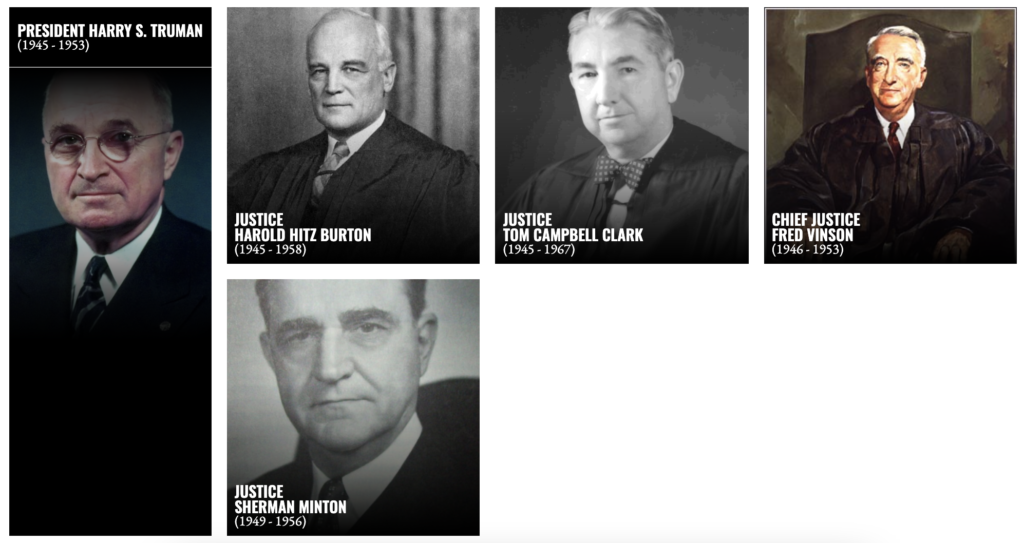Scores of millions of Americans have zero memory of living under a White House of, by, and for Big Labor. So we are going to have to make new memories to accurately assess President Joe Biden.
After repeatedly promising on the campaign trail to be “the most pro-union president you’ve ever seen,” Biden has broken with all recent Democratic predecessors by actually governing like he means it.
On his first day in office, the 46th president fired National Labor Relations Board (NLRB) General Counsel Peter Robb, replacing him with former Communications Workers of America attorney Jennifer Abruzzo. On the same day, he rescinded some of Donald Trump’s federal civil service reforms, declaring, “It is also the policy of the United States to encourage union organizing and collective bargaining.”
Three days later, Biden announced the creation of a new Made in America Office inside the White House. The day after that, he signed an order saying federal agencies “shall…apply and enforce the [1931] Davis-Bacon Act and prevailing wage and benefit requirements,” thus making government workers and contractors richer at the expense of taxpayers. He appointed Laborers’ International Union of North America member Marty Walsh, the former mayor of Boston, as secretary of labor and created a Task Force on Worker Organizing and Empowerment, headed by Vice President Kamala Harris.
In February 2021, Biden took the step—”basically unprecedented in American history,” University of Rhode Island historian Erik Loomis later told Vox—of endorsing a specific workplace unionization effort, at an Amazon warehouse in Bessemer, Alabama. (The final tally in Bessemer was 1,798 votes against unionization, 738 in favor.)
The March 2021 American Rescue Plan sloshed $1.9 trillion into mostly governmental areas, where unionization rates are high. It included an $86 billion unconditional bailout for multi-employer pension funds, a Big Labor wish-list item that had zero to do with the bill’s stated purpose of COVID-19 relief.
“Biden talks like the most pro-union president since the New Deal,” The Washington Post concluded in April 2021 after an in-depth comparison of presidential labor rhetoric. Yet he was just getting started.
The November 2021 Infrastructure Investment and Jobs Act gushed out another $1.2 trillion in federal spending, including a “Buy American” provision mandating that building materials for the law’s road, bridge, and rail projects come primarily from the United States. In addition, Biden has kept in place many of Trump’s labor-pleasing protectionist restrictions on trade and immigration.
On the first anniversary of Biden’s inauguration, a host of union heavies came together under the umbrella of the AFL-CIO to lob laurels in his direction. “On the campaign trail and throughout his presidency,” gushed International Brotherhood of Electrical Workers President Lonnie R. Stephenson, “Joe Biden has promised to be the most pro-union, pro-worker president in history. As President Biden celebrates his first year in office, I can say with confidence his actions are matching his words.”
Seafarers International Union President Michael Sacco praised Biden for supporting the 1920 Jones Act, a classic of concentrated-benefits, dispersed-costs protectionism that requires ships sailing between U.S. ports to be American-owned. American Federation of School Administrators President Ernest A. Logan pronounced Biden, who likes to brag in speeches that he “sleeps with” a teachers union member, the “Best Education President.” Operative Plasterers’ and Cement Masons’ International Association General President Daniel E. Stepano summed up the prevailing labor assessment: “Biden has been the most pro-union, pro-worker president since Franklin Delano Roosevelt.”
Is that what Americans, let alone the comparatively conservative wing of the Democratic Party that elevated Biden over his more progressive competitors in the 2020 primaries, had in mind when they voted for the old Washington hand? Probably not. Labor issues generally did not rise above the considerable din kicked up by any conversation involving Trump.
Yet it’s not like Biden made any secret of his sympathies. Despite his half-century in government office, he has always maintained a regular-guy, blue-collar persona, complete with tall tales about family members from Irish coal mining stock. “My great-grandfather Blewitt…was a mining engineer, back in the days of the Molly Maguires,” the president said in his 2021 Labor Day remarks, referring to a controversial 19th century mining-union group in the Northeast. “Molly Maguires…they were a little tougher. You gave them a hard time, and you ended up on the doorstep, in a bag.”
There is a big gap, however, between rhetorical nostalgia for the working-man struggles of yesteryear and the largely white-collar realities of 21st century Democratic Party unionism. Just 6 percent of the private-sector work force is unionized, down from 17 percent in 1983 and 36 percent in 1953, according to the Bureau of Labor Statistics (BLS) annual report in February 2022. The rate for the public sector, by contrast, was 34 percent in 2021, about the same as it has been for the last several decades. “The highest unionization rates,” BLS noted, “were among workers in education, training, and library occupations.” Coal mining this decidedly is not.
Biden would surely like to reverse that long private-sector slide. He has been pushing for the Protecting the Right to Organize (PRO) Act, which would abolish “right to work” laws that prohibit unions from forcing nonmembers to pay dues in 27 states. But that bill, which also would classify millions of independent contractors as employees, is already dead on arrival in the 50–50 Senate during a midterm year when Democrats are likely to see steep losses.
The awkward truth of contemporary unionism is that it’s largely an effort to remove taxpayers from negotiations between white-collar union reps and the lawyer/politicians they help elect. Teachers, cops, and civil-service bureaucrats treat the tax base like a guaranteed revenue stream, which they try to maximally divert for their own self-interest at the expense of the people paying their salaries and guaranteeing their pensions. In the zero-sum game of government budgeting, blue-collar workers in the hinterlands will continue to foot the tab for paper pushers in the capital. At most, Biden will extend some of those benefits to the building trades, jacking up costs while claiming to save money.
“As president of the United States,” he said in February while signing yet another pro-labor executive order, “I award contracts. [And] unless the product that I’m purchasing for the American people was made in America, and all of its component parts are made in America, we ain’t buying it. We’re just simply not buying it. Every single project that we’re talking about that’s paid for with federal dollars and is a federal project, it’s going to be union jobs—every single one of them. And guess what? The American public is going to be safer, and it’s going to be cheaper—cheaper paying the right wage and the right trained people to begin with and get the job done right and on time.”
Such magical thinking will continue to expand in the absence of criticism. Although it may seem as antiquated as coal-mining strikes and Molly Maguires, it’s time for the rest of us to again start noticing the anti-economic excesses of Big Labor.
The post The Big Labor President appeared first on Reason.com.
from Latest https://ift.tt/7dAp6jI
via IFTTT






